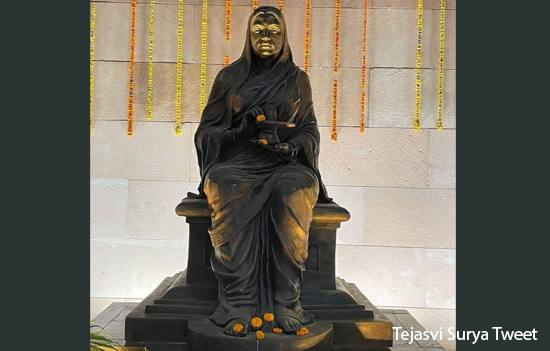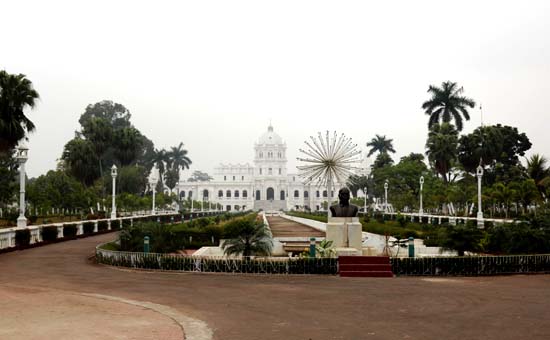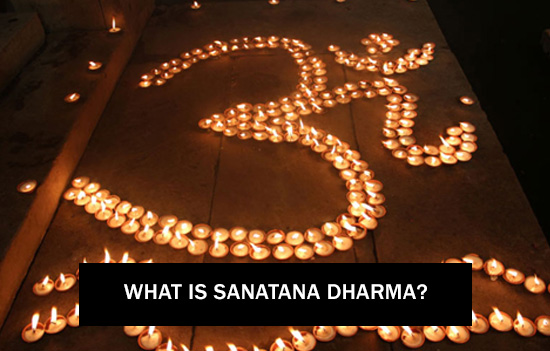- Congress strategy is to increase caste differences and highlight shortcomings in Indian society. These must be challenged & comparisons made with the West. Party’s policy is Divide and Rule like that of the English.
Congress strategists, within and outside India, have realized that two key reasons for BJP’s victory are that caste differences have reduced and support of Indian Women. Hindus are voting as followers of Sanatana Dharma during Lok Sabha polls.
The Congress is known for its successful
caste alliances for e.g. the 1980s KHAM in Gujarat i.e. Kshatriyas, Harijan,
Adivasi and Muslim. Ditto for Caste based parties like Bahujan Samaj and
Samajwadi.
So,
how to accentuate caste differences and make Backward Classes feel they are
being humiliated.
Both, i.e. caste and inequality of women
are blamed on Sanatana Dharma as Stalin Junior has done. He said, “Sanatan Dharma is a principle that divides people in the name of caste and religion. Uprooting Sanatan Dharma is upholding humanity and human equality.” Hindustan Times
Next, Rahul G called for a caste census
(last done in 1931), Sonia G call for OBC quota in Women’s Reservation Bill and Congress President Kharge “alleged that the then president Ram Nath Kovind was not invited for the foundation laying of the new Parliament building because he is “untouchable. President Droupadi
Murmu was not invited for the inauguration of the new Parliament
building. “But there is no place for (president Murmu) and then they say that they respect women a lot,” Indian Express Not to forget the Caste
Census in Bihar and being proposed in Rajasthan/MP.
Simultaneously caste is being raised in
the U.S.
The Bihar Caste
Survey includes Muslims by Caste. Thus, numbers are misleading. If Muslims are excluded, then EBC/BC’s are 57.9% of Bihar population and not 63.1% as stated.
The
Congress strategy is to attack Sanatana Dharma on Caste and condition of Tribals,
Women. Simply put, divide Hindu society and make their self-esteem fall as it
is beginning to rise.
Caste, suppression of backward classes
and treatment of women has become a popular narrative without being challenged.
Whilst accepting that Indian society is imperfect here are Indic thoughts on
caste, was education denied to the Sudras, status of women and Sanatana Dharma.
CASTE
1.
European origin of word Caste and Indic equivalent
The word ‘caste’ is of Spanish or Portuguese origin and fails to capture the meaning of the Indian term, jati, which is more properly translated as “community.” Jati in traditional
India promoted and preserved diversity and multiculturalism by allotting every
jati a particular space and role in society so that no jati would be
appropriated or dominated by another.
2.
Historical Background to caste
Indian scriptures
do not sanction caste. Read The Truth
behind caste
“In the 10th century, the castes were comparatively fluid. But then the fundamental values of Dharmasastras were changed to provide defensive ramparts in order to present a solid front to an aggressive alien culture and religion.” History and
Culture of Indian People Volume 5 Post foreign invasions the caste
system became rigid.
Surely the system degenerated over time.
3. Spirituality broke caste distinctions
Author, ex-British
Council Scholar and Spiritualist Dr Satish Kapoor wrote in Hinduism:
The Faith Eternal that spirituality is not confined to higher castes
or classes or gender. Veda Vyasa was born to a fisherwoman, Tiruvalluvar, the Tamil poet-saint,
to a weaver. Tirupann, the Alvar saint, was panar, an
untouchable etc. Pg. 71 Many saints of medieval Maharashtra came from the lower
strata of society. Goraba (1236-1317) was a potter, Namdeva (1270-1350) a
tailor, Tukaram (1650) a sudra peasant.
4.
Why British found fault with Caste?
Noted
Gandhian and
author Dharampalji wrote in Rediscovering
India, “For the British, as perhaps for some others before them, caste has been a great obstacle, in fact, an unmitigated evil not because the British believed in casteless-ness or subscribed to a non-hierarchical system but because it stood in the way of their breaking Indian society, hindered the process of atomisation, and made the task of conquest and governance more difficult.” Read Caste made
into evil
5. Benefits of the Caste System
Author and former head of Proctor
and Gamble India Gurcharan Das said in Mint, “My own politically incorrect answer is that we had in India the good fortune of having merchant castes, trading communities. If you institute economic reforms in a society where people know how to conserve capital… If you have communities in whose DNA is that… it is a genetic advantage.” Source
Read Why Marwaris
take to business
Das also wrote, “Joel Kotkin demonstrates these strengths in the case of Palanpur Jains, who have used their castes and family networks in wresting half the global markets for uncut diamonds from the Jews.”
Columnist Aakar Patel wrote in the Mint that
the current situation in Pakistan is because of an imbalance in caste. The
situation arose because there is no mercantile caste in Punjab after the
Khatri-Arora combine migrated to India in 1947. Source
Read
Caste as social
capital
 Rani Ahilyabai Holkar, 18th century, belonged to the shepherd community.
Rani Ahilyabai Holkar, 18th century, belonged to the shepherd community.
Was
Education always denied to Sudras?
6. Maximum number of students in Madras Presidency were SUDRAS
Dharampalji
went through British and Indian archives to reproduce reports, of surveys
undertaken by the British in Bengal, Punjab and Madras Presidency (1800-1830),
in his book The
Beautiful Tree: Indigenous Indian Education in the 18th century
According to the collectors’ reports reviewed by Governor Sir Thomas Munro on 10 March 1826, of the 30,211 male school students in Madras Presidency, 20 percent were Brahmins and Chettris, 9 percent were Vaishyas, 50 percent were Shudras, and 6 percent were Muslims. Others constituted 15 percent. Read
excerpts
Read
Were Backward
Classes always suppressed in India
Did
you know that ace music director R D Burman belonged to the Royal Family of
Tripura now considered a Scheduled Tribe.
 A bust of Ambedkar is placed at palace entrance to show ST status of former rulers.
A bust of Ambedkar is placed at palace entrance to show ST status of former rulers.
It is worth noting that Ambedkar’s Brahmin teacher took such a liking to him that he changed his surname from Ambavadekar to his own in the school’s records. 1 Col
Anil Athale wrote in The Legacy of
Shivaji the Great that the MAHARS, regarded as untouchables, played role of
village guards and so found easy acceptance in Shivaji army. They manned the
intelligence gathering and communication and were called HARKARAY.
Sayajirao Gaikwad, Naval Bhathena and Shahu Maharaj supported Ambedkar’s education. It was social reformer Krishnaji Keluskar who took Ambedkar to meet Sayajirao. Note that Ambedkar’s second wife was a Brahmin.
 Unsung Women Warriors of India.
Unsung Women Warriors of India.
STATUS
of WOMEN
Whilst reviewing status of Indian Women
we do not compare with how women were treated in Western (Christian) society
earlier.
Scholar A S Altekar wrote, “Down to 1850 A.D. in England, a woman could not take a walk, much less a journey, alone, nor could she ask a fellow worker to visit her, unless the worker was a girl and of a familiar family. When the House of Commons was built in 1844, it was with great difficulty that a Ladies’ Gallery was sanctioned.” 2
In the U.K. it was only in 1918 that
women above 30 who met a property qualification were allowed to vote. And it
was in 1928 that women got the same voting as rights as man. Source
Swami Vivekananda wrote, “You will find Maitreyi, Gargi and other ladies of revered memory have taken the places of the Rishis through their skills in discussing the Brahman.
So also till recently, women were not
treated equally in the West. Men and Women players got equal prize money in
Wimbledon only in 2007. Source
 Students of Vivekananda Kendra, Along, Arunachal Pradesh. 2013.
Students of Vivekananda Kendra, Along, Arunachal Pradesh. 2013.
Yet Indians are over-critical.
They forget that Bharat produced so many
great women including warriors. Dr Nalini (Major) Janardhan wrote about them in
the Bhavan’s Journal August 2022 issue. Their names are “Matangini Hazra, Jhalkari Bai, Rani Durgawati, Begum Hazratmahal, Rani Avantibai Lodhi, Rama Devi Choudhary, Durga Bai Deshmukh, Rani Gaidinliu, Madam Bhikaji Cama, Kittur Rani Chennamma, Belawadi Mallamma, Rani Abbakka Chowta, Rani Velu Nachiyar, and Uda Devi. Read about these
great women
Paramhansa Yogananda described Ahilyabai Holkar (belonged to the shepherd community) “as the greatest woman of modern India. Read Why she was
a great woman
Can we stop being obsessed with men and learn to value our women
please.
Read The Incredible
Women of Bharat
When
there were a series of Rapes, India was called the most dangerous place for
women and India singled out. In 2018 Amrit Dhillion
wrote in the Times
of India, “The per capita figures for rape for 2010 (nothing more recent is available on the net) are: India – 1.8 (per 1,00,000 population); Germany – 9.4; the UK – 17; Norway – 19.2; the US – 27.4.”
I am not defending the
horrendous crime of rape but putting matters in perspective.
Similarly, Hindus are
blamed for dowry.
They forget that the
island city of Mumbai was given in dowry by the Portuguese to the British
around 1670. In
this 2003 Times of India interview author Veena Talwar
states
that dowry in Punjab was a result of one of the many socio-economic changes
brought about the British. Not that I support dowry in any form.

Sanatana Dharma
Indics see Sanatana
Dharma (SD) through the one book-one founder prism so are unable to understand
it.
Here are excerpts from an
excellent article by Dr Satish
Kapoor
in The Speaking Tree, “SD is the homage of divinity to itself. It is sanatan, eternal, for not being static and for its ability to become new again, as per the Atharva Ved, X.8.2. As a sage puts it, ‘Sada bhavah sanatanah.
Sanatana karoti iti sanatanayati. Sanatanayatiti sanatanah. Sanatanashchasau
dharma iti sanatano dharmah,’ meaning, ‘That which is always existent is sanatan; that which causes one to become sanatan is also sanatan. That which is sanatan and dharma is sanatan dharma’.
SD goads one ‘to move from the unreal to the real, from darkness to light, from death to immortality’. There is no place in it for here say or blasphemy, no tradition of crusades, no bifurcation of humanity into the faithful and the unfaithful, no clash with science or with other faiths, as truth can be expressed in a million ways.”
Please read, reflect and decide for yourself if the Congress strategy is indeed Divide and Rule.
References
1. Dr. Ambedkar:
Life and Mission by Dhananjay Keer. Pg. 14
2. The
Position of Women in the Hindu Civilization 1959 -publisher Motilal
Banarsidas. Pg 178
Also read
1.
What is Sanatana Dharma
2.
Why should Hindus stop being defensive about caste